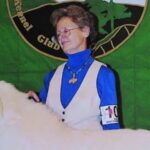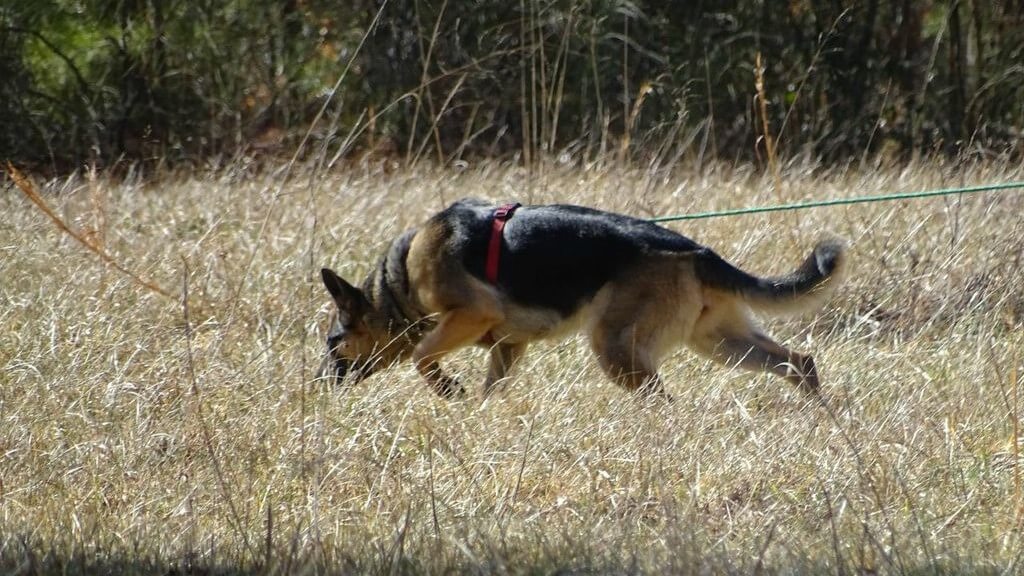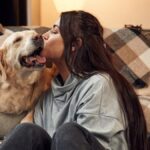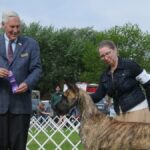This article was originally published in Showsight Magazine, June 2015 issue.
The German Shepherd Form & Function
I open my front door and step out to the sounds of lambs calling for their moms, ewes answering their babies, the rooster crowing, peacocks hooting, guineas screeching and, in the distance, the ducks quacking and arguing as only ducks do. As I approach the sheep pasture, 70 heads turn my way, all looking to see which dog I have today.
If it’s the Border Collie, they know there will be no rest for the wicked. There is farm work to be done. The sheep may be sorted into small groups for lessons, perhaps it’s a day for worming, or maybe time to shear, or trim feet or just filed through the foot bath. The sheep are relieved to see that it’s not the Border Collie, it’s the German Shepherd. The 23 ewes and 47 lambs all eagerly start toward the gate to meet us. This morning, they get to come out and graze new grass. They don’t yet know which area they will be grazing, but it will be fresh and they know that the German Shepherd will define their grazing area by trotting along the borders.
The German Shepherd Dog breed was developed in the late 1800s by Captain Max von Stephanitz. There were many types of herding dogs in Germany prior to that time. In his travels across Germany, von Stephanitz had the opportunity to observe these differing herding dogs at work. He developed a desire to standardize an “ideal” German sheep herding dog, a breed that would encompass the characteristics that would also make the dog ideal for military and police work. While on patrol near the Rhine River, the Captain observed a prick eared lupine type sheep dog tending a flock while the shepherd took a nap.
Von Stephanitz wanted his breed to resemble that dog as well as have the best traits of the various herding dogs being used in Germany: diligence, obedience and independence. The dog had to be able to work 200 to 1000 plus very large heavy sheep, taking them out of the sleeping pen in the morning and keeping them in order on the road as they walked to the grazing fields for the day. The human would lead the flock, but the dog had to be capable of working long lengths of the flock, as the roads were narrow and the flock must be kept on the road and out of the fields to the sides. The dog must have incredible endurance as he continually moved along the length of the flock.
After arriving at the grazing area, the dog defined the border that the sheep must graze within and then continued to patrol those borders for many hours. He must have courage to face down an irate ram, the patience and good temperament to deal with silly lambs, always have one ear cocked and listening for his handler so he could respond immediately to commands, but also the intelligence as well as independence to assess an ever changing situation and deal with it appropriately without constant input from the human shepherd. In addition, the ideal dog needed an instinctual protective nature to keep the flock safe from strangers as well as the occasional wild animal.
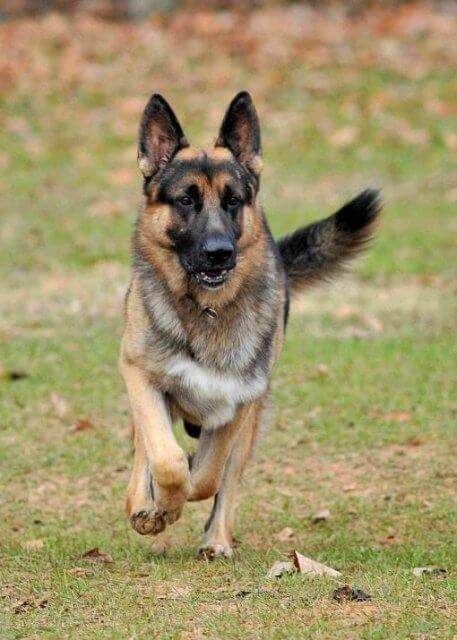
Captain Max von Stephanitz said, “The most noble profession for a shepherd dog is that of tending sheep…”, but he also wanted a breed that could serve mankind in other ways. The traits that made German Shepherd such a great tending dog, also made it a natural to move into military service and law enforcement. Captain Max von Stephanitz said, “Our shepherd dog is a born police dog, for when he is with the flocks and the herds, he is also ‘policeman’.” Other traits prized in herding, such as intelligence and independence, as well as confidence, also has made the German Shepherd ideal to serve as service and guide dogs as well.
Other traits prized in herding, such as intelligence and independence, as well as confidence, also has made the German Shepherd ideal to serve as service and guide dogs as well.
The Captain recognized that choosing the best herding dogs wouldn’t always be possible with the changing world, so for dogs who were not working sheepdogs, he developed a three part test of obedience, protection and tracking to choose suitable breeding stock for his developing breed. Over the years, Schutzhund evolved into more than a breed test and is now a very popular international sport enjoyed by many different breeds. The sport has changed names and is being known most recently as Internationale Prufungs-Ordnung, IPO for short. The Verein für Deutsche Schäferhund, or SV, is the original German Shepherd Dog breed club in Germany. The SV still requires that all dogs used for breeding be either titled in IPO or Herdengebrauchshund (HGH), the German Tending/Herding test for German Shepherds.
The AKC German Shepherd breed standard states, “The first impression of a good German Shepherd Dog is that of a strong, agile, well muscled animal, alert and full of life.” STRONG. The German Shepherd needs to be capable of confronting one or more 300 pound sheep that really think the grass is greener over the border. He also must be able to take down a criminal in his job for the military or police. AGILE. In the HGH, the dog should be capable of jumping a one meter fence into the holding pen.
In IPO, the dog must retrieve a dumbbell over a one meter jump as well as scale a wall which is similar to, but steeper than, an A-Frame in AKC agility. WELL MUSCLED. A proper German Shepherd needs to have stamina and be capable of hard labor; tending for hours on end, patrolling with the military in the mountains of Afghanistan, tracking and searching for a lost child. ALERT. As a tending dog, the German Shepherd must always be aware of his surroundings, where the sheep are eating and any potential danger to his flock. As a military or police patrol dog, it goes without saying that this trait is of paramount importance.
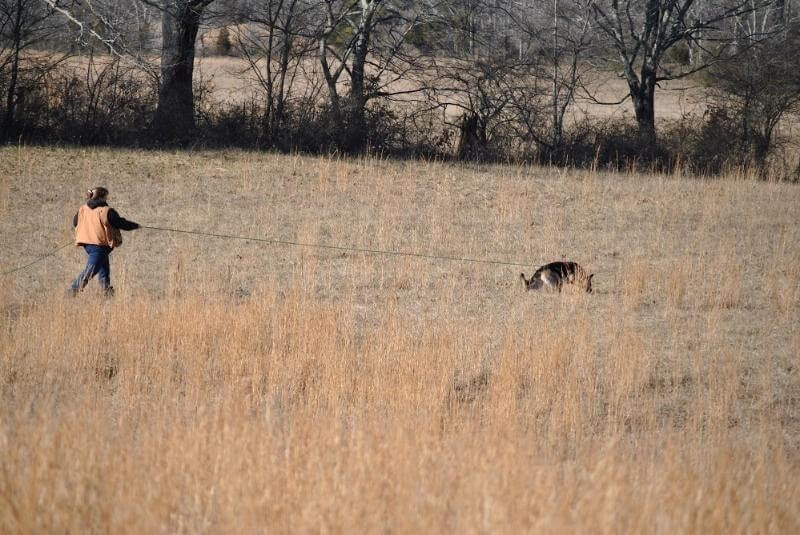
As a guide dog, the German Shepherd’s job is to constantly assess the environment and how it will affect his charge. FULL OF LIFE. A physically premier working dog is nothing without this. Even if a dog is physically capable of hard labor, they have to have the innate drive and desire to perform.
Also important in the breed standard, “The ideal dog is a working animal with an incorruptible character combined with body and gait suitable for the arduous work that constitutes its primary purpose.” As important as movement is in defining the German Shepherd Dog, character and temperament are of the utmost importance. Without proper temperament, there is no German Shepherd. “The breed has a distinct personality marked by direct and fearless, but not hostile, expression, self-confidence and a certain aloofness that does not lend itself to immediate and indiscriminate friendships.” As a herding dog, the German Shepherd must be self-confident so the sheep will respect him. If necessary, he must be willing to grip the sheep, but if he exudes confidence and sureness, the sheep are much less likely to challenge him.
The standard also states, “A German Shepherd is a trotting dog and its structure has been developed to meet the requirements of its work.” The German Shepherd as originally utilized as a tending sheep dog and envisioned by Captain Max von Stephanitz, was that of a trotting dog, capable of tirelessly covering large distances with minimal effort. The German Shepherd should be able to accelerate into a long ground covering gait, but then also slow down into an easy suspended trot.
A dog that needs to break into a gallop will disturb the grazing of the sheep and so is less desirable than a dog that maintains a trot and only changes the speed of such. A dog that stops and stares at the sheep can be disturbing to the flock and often sheep will stop eating and stare back at the dog, time wasted when they could be filling their bellies. A dog that continues to move while the flock eats is actually calming to the sheep as the dog is clearly telling them where the boundary is located and the sheep do not see them as a threat.
Besides the variety of fields of practical work done by the German Shepherd, there are also many sports of which the German Shepherd is a popular competitor. The versatility of the German Shepherd breed is where it truly excels. In AKC sports alone, German Shepherds compete in agility, herding, coursing, obedience, rally and tracking. It has been said that the German Shepherd may not be the best at any particular sport, but they are second best at all of them.
Disclaimer & Thanks
German Shepherds are a multi-purpose herding breed and are quite capable of doing many of the chores described in the initial paragraph. Although I sometimes use my GSDs for chore work, my sheep still look upon them as the tending dogs and expect to “go out for lunch” when they see them. Thanks to my friend Susan Sullivan for generously sharing her expertise and knowledge as well as teaching me all I know about tending with German Shepherds.
